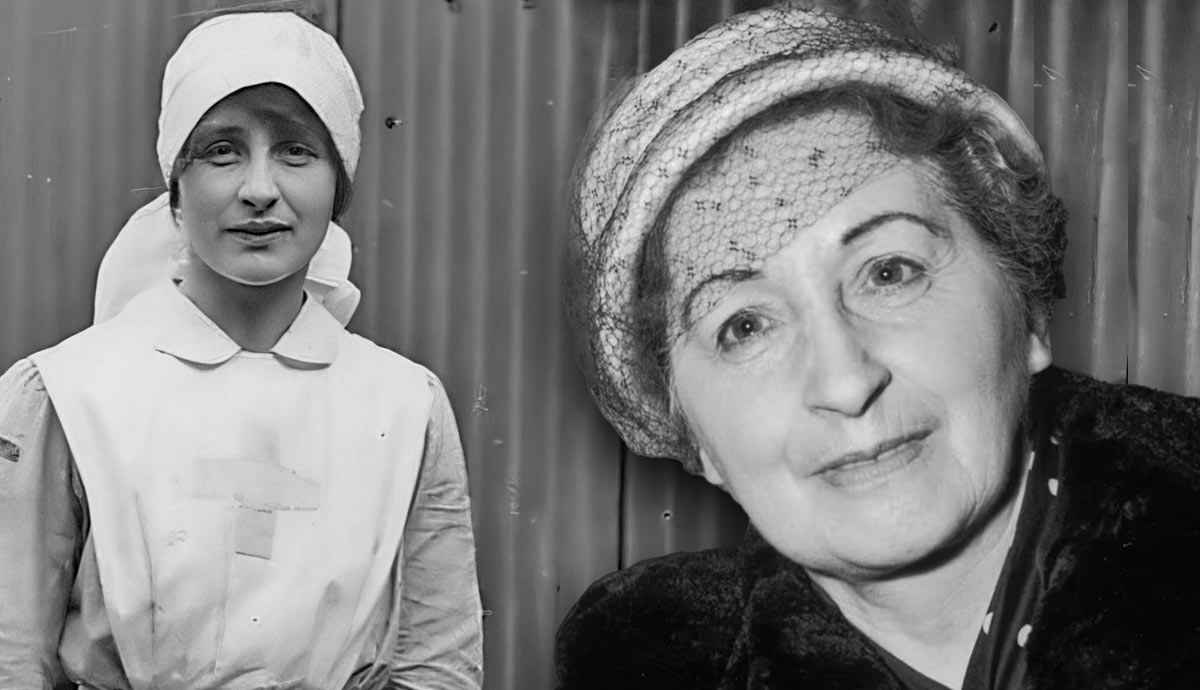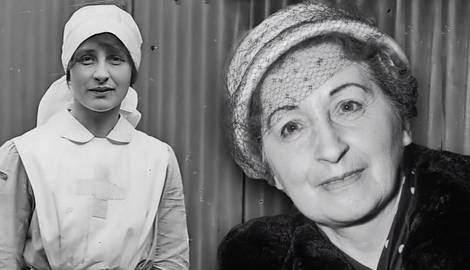
Vera Mary Brittain was the eldest of two children born to a wealthy family on December 29, 1893, in Newcastle-under-Lyme, Staffordshire. Shortly after beginning her studies at Oxford University, the First World War began, and she signed up as a Voluntary Aid Detachment (VAD) with the Red Cross. Brittain’s experiences during the war profoundly changed her and she spent the rest of her life as a pacifist, campaigning against war whilst also campaigning for women’s rights.
How Was Vera Brittain Shaped by Her Early Years?

Brittain grew up in a middle-class household where she was educated by a governess. The family moved to Buxton, Derbyshire in 1905 and Vera later attended a boarding school in Kingswood, Surrey. She had a very close relationship with her younger brother, Edward, and his tragic death during the war remained with her for the rest of her life. During her upbringing, she showed great interest in education and writing and wanted to go to university and (despite the objections of her father) she sought admission. [1]
In 1913, she was introduced to one of her brother’s school friends, Roland Leighton. She would become involved with and eventually engaged to Leighton, but their relationship would be cut short with his death in service in December 1915.
She was successful in her exams and was admitted to Somerville College in 1914, but with the advent of war her views and thoughts shifted. In 1915, at the end of her first year at Somerville College she abandoned her academic career to serve her country.[2]
What Did Brittain Do During World War I?

During the summer of 1915 she worked at the Devonshire Hospital in Buxton, as a nursing assistant, tending wounded soldiers. Vera applied to join the VAD as a nurse and in November 1915 was posted to the First London General Hospital at Camberwell. Throughout this time, Leighton and Brittain would often send each other letters and poems, sometimes discussing the war, or their relationship; he had always been supportive of her desire to write. [3]
Although devastated following Leighton’s death, Vera continued in her position as a VAD, returning to Camberwell- she was then posted to Malta in September 1916. Due to their close relationship, Vera wanted to be near her brother so when he was posted to France in June 1917, she requested a posting there and was placed in Étaples.
While serving in Étaples, Vera received a letter from her father informing her that her mother had suffered a breakdown and had to enter a nursing home in Mayfair. Her father made it clear that she should leave France and return home to Kensington, and she did so in April 1918- her mother returned home soon after. She had to become re-accustomed to this way of life, and during this jarring time, she learned of her brother’s death.[4]
How Did Brittain Spend Her Later Years?

Following the end of the war, Brittain returned to Oxford University but changed her studies from English to History in an attempt to understand why the war had happened. At this time, she met Winifred Holtby and began a lifelong friendship until Holtby’s death in 1935. Brittain and Holtby graduated together in 1921 and moved to London where Brittain wrote for the feminist journal, Time and Tide, as well as publishing two books. Following her marriage to George Catlin in June 1925 she had two children (John and Shirley) and moved to the US, but she could not settle and moved back to England and lived with Holtby.[5]
During the Second World War, Brittain worked with the Peace Pledge Union to promote pacifism. She also began publishing a journal, Letters to Peace Lovers, which expressed her views on the war. Her most significant work, Testament of Youth, detailing her experiences of education, her times as a nurse and her relationship with her brother Edward and fiancé Roland during the war, was published in 1933.
Brittain continued to promote pacifism and feminism until her death in March 1970 at the age of 76. [6] Her ashes were divided between her husband in St James the Great Churchyard, Warwickshire and her brother Edward’s grave at Asiago Plateau, Italy.
Sources:
[1] Mark Bostridge and Paul Berr, Vera Brittain: A Life (Virago, February 2016)
[2]https://spartacus-educational.com/Jbrittain.htm
[3] Mark Bostridge, Alan Bishop, et al., Letters from a Lost Generation: First World War letters of Vera Brittain and four friends (Virago, November 2008)
[4] Mark Bostridge and Paul Berr, Vera Brittain: A Life (Virago, February 2016)
[5]https://spartacus-educational.com/Jbrittain.htm








